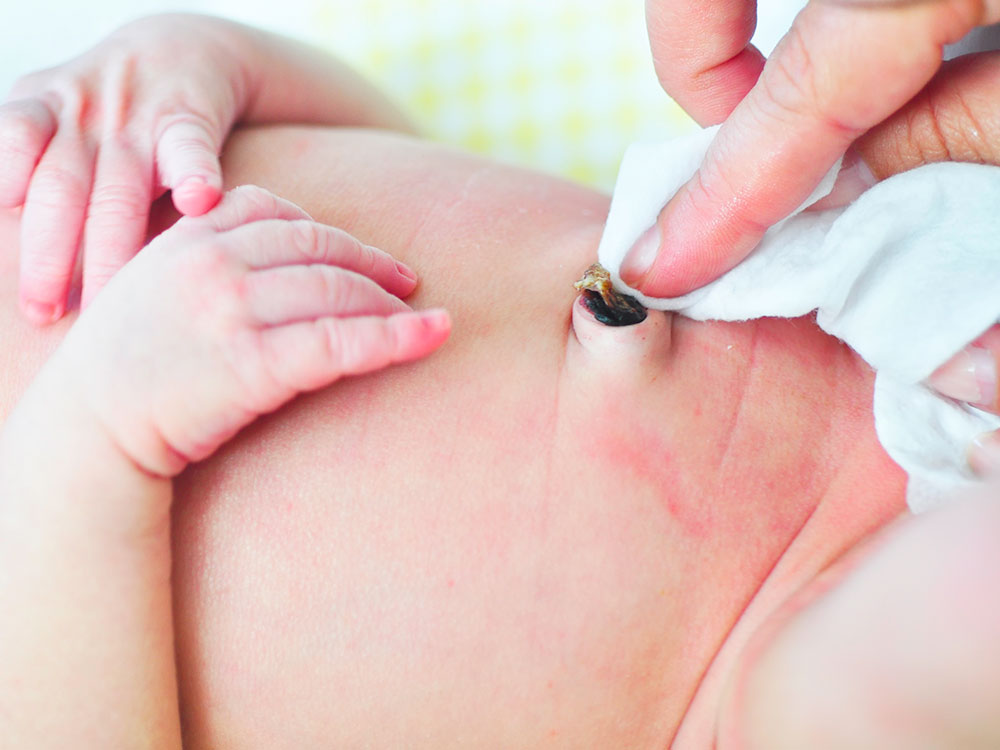
Newborn Baby Belly Button Care: A Comprehensive Guide
The belly button, also known as the umbilicus, is a crucial part of a newborn baby’s anatomy. It is the remnant of the umbilical cord, which connected the baby to the placenta during pregnancy. After birth, the umbilical cord is clamped and cut, leaving behind a small stump that will eventually dry up and fall off.
Proper care of the newborn baby’s belly button is essential to prevent infection and promote healing. Here is a comprehensive guide to newborn baby belly button care:
1. Keep the Belly Button Clean and Dry
The most important aspect of belly button care is keeping it clean and dry. This will help prevent bacteria from entering the area and causing an infection.
- Clean the belly button daily: Use a clean cotton ball or gauze pad dipped in warm water to gently wipe around the base of the stump. Avoid using soap or alcohol, as these can irritate the skin.
- Keep the area dry: After cleaning, pat the belly button dry with a clean towel or air dry it. Avoid covering the area with a diaper or clothing, as this can trap moisture and promote bacterial growth.
2. Monitor the Belly Button for Signs of Infection
It is important to monitor the belly button for any signs of infection, such as:
- Redness: The skin around the belly button may become red and inflamed.
- Swelling: The belly button may become swollen or puffy.
- Pus or discharge: The belly button may produce pus or a clear discharge.
- Bad odor: The belly button may have an unpleasant odor.
If you notice any of these signs, contact your healthcare provider immediately. Early treatment of an infection is crucial to prevent serious complications.
3. Allow the Belly Button Stump to Fall Off Naturally
The belly button stump will typically fall off within 1-3 weeks after birth. It is important to allow the stump to fall off naturally, as pulling or cutting it can cause bleeding and infection.
- Do not pull or cut the stump: Allow the stump to dry up and fall off on its own.
- Keep the area clean and dry: Continue to clean and dry the belly button area as described above.
4. Bathe the Baby as Usual
Once the belly button stump has fallen off, you can bathe the baby as usual. However, it is important to avoid submerging the belly button in water for prolonged periods of time.
- Use a sponge bath: For the first few weeks after the stump falls off, use a sponge bath to avoid getting the belly button wet.
- Pat the belly button dry: After bathing, pat the belly button dry with a clean towel.
5. Dress the Baby Appropriately
Dress the baby in loose, comfortable clothing that does not rub or irritate the belly button. Avoid using tight diapers or clothing that may trap moisture.
6. Contact Your Healthcare Provider if Concerned
If you have any concerns about your baby’s belly button, such as excessive bleeding, persistent redness, or swelling, contact your healthcare provider immediately.
Additional Tips:
- Use a cotton ball or gauze pad to clean the belly button: Avoid using cotton swabs, as they can push bacteria into the area.
- Be gentle when cleaning the belly button: Avoid scrubbing or rubbing the area, as this can irritate the skin.
- Do not apply any ointments or creams to the belly button: Unless specifically directed by your healthcare provider, do not apply any ointments or creams to the belly button, as these can block air circulation and promote bacterial growth.
- Avoid using baby powder: Baby powder can irritate the skin and interfere with healing.
- Do not cover the belly button with a bandage: Covering the belly button with a bandage can trap moisture and promote bacterial growth.
Conclusion
Proper newborn baby belly button care is essential to prevent infection and promote healing. By following these guidelines, you can help ensure that your baby’s belly button heals quickly and without complications. If you have any concerns or questions, do not hesitate to contact your healthcare provider.
